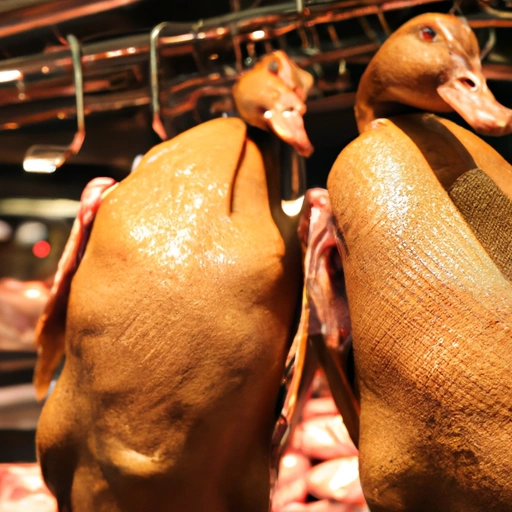Duckling
Description

Duckling refers to the meat from a young duck, typically tender and flavorful, which is esteemed in many culinary traditions around the world. An incredibly versatile ingredient, duckling can be prepared in a variety of ways and is often considered a delicacy. In recipes, measurements for duckling can vary, with American units including pounds (lbs) and ounces (oz), and European units including grams (g) and kilograms (kg).
Common uses
Duckling is commonly used in a variety of dishes, including roasted whole duck, duck confit, and Peking duck. It is also popular in hearty stews, sophisticated appetizers, and rich sauces. The meat is known for its lean protein, making it a favorable option in health-conscious recipes. Duck fat, a byproduct of cooking duck, is also used for sautéing and roasting vegetables, imparting a deep flavor.
Nutritional value
Calories
A 3.5-ounce (100-gram) serving of cooked duckling contains approximately 337 calories (1409 kilojoules).
Protein
Duckling is an excellent source of protein, providing about 19 grams per 3.5-ounce (100-gram) serving.
Fat
This serving of duckling also contains approximately 28 grams of fat, of which 10 grams are saturated fat.
Carbohydrates
Duckling is low in carbohydrates, with less than 1 gram per 3.5-ounce (100-gram) serving.
Vitamins
Duckling is a good source of B-vitamins, notably B-12 and niacin (B-3).
Minerals
It provides essential minerals such as iron, phosphorus, and selenium.
Health benefits
Duckling is rich in protein, which is crucial for muscle growth and repair. The B-vitamins present in duck meat help support cellular processes and energy metabolism. Iron is important for blood health, while selenium functions as an antioxidant to protect the body's cells from damage.
Potential risks
While duckling has many nutritional benefits, its high fat content, particularly saturated fat, can pose health risks if consumed in excess. It is advisable to enjoy duckling in moderation and balance it with a diet rich in fruits, vegetables, and grains.
Common recipes
Classic recipes include Duck à l'Orange, Peking duck, duck confit, and duck breast with various sauces. Duckling can be incorporated into soups, salads and pasta dishes as well.
Cooking methods
Duckling can be roasted, grilled, braised, or slow-cooked, which highlights its versatility. The skin is often cooked until crisp, providing a pleasing texture contrast to the tender meat.
Pairing with other ingredients
Duckling pairs well with sweet and tart fruit flavors such as orange, cherry, and plum. It also complements earthy herbs and spices, like thyme, sage, and five-spice powder.
Summary
Duckling is a globally esteemed ingredient known for its richness and versatility in the kitchen. While it has an impressive nutritional profile including high-quality protein and essential minerals, moderation is key due to its fat content. Duckling can be enjoyed in a multitude of culinary applications, offering delightful flavors and textures that can be adapted to suit a wide range of palates and cuisines.